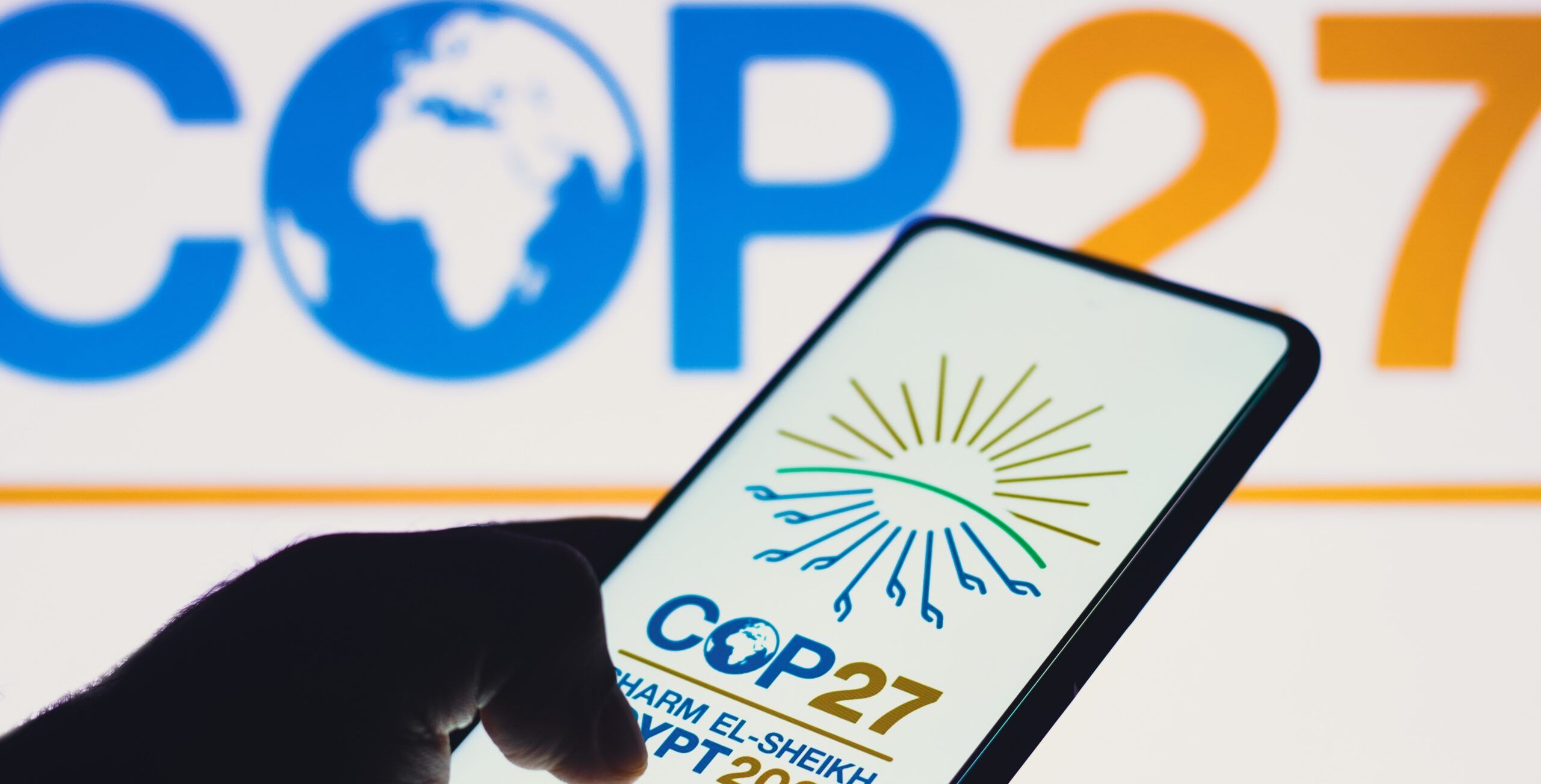
ITU at COP27: Standards for green digital transformation
By Malcolm Johnson, Deputy Secretary-General, ITU
The steady rise in global temperatures, coming on the back of record greenhouse gas concentrations in Earth’s atmosphere, is altering familiar weather patterns.
Shifts in temperatures have made extreme weather events, including heat waves, storms, droughts, and other catastrophic occurrences, happen more often, causing increasing economic damage and losses of life. In recent examples, we have witnessed wildfires in Tunisia and devastating floods in Pakistan.
Extreme weather events are affecting larger populations, destroying essential infrastructure, and threatening the planet’s fragile biodiversity. Climate and environmental disruptions have affected digital networks and infrastructure, too.
But the need to keep networks operative is only one of the reasons the International Telecommunication Union (ITU) has taken part in the United Nations climate change conference, COP27, over the last two weeks.
In fact, information and communication technologies (ICTs) are already driving informed, targeted climate action worldwide. The world’s accelerating digital transformation makes the UN Sustainable Development Goals achievable despite setbacks like the COVID-19 pandemic and a tenuous geopolitical situation.
Technologies for climate mitigation
The challenges and opportunities of green digital transformation were at the centre of an ITU tutorial at COP27 this week. Khaled El Attar, Deputy Minister for Administrative Development, Digital Transformation and Automation, joined the session, which was hosted and jointly organized by Egypt’s Ministry of Communications and Information Technology.
The tutorial, moderated by ITU’s Mario Castro Grande and featuring two of ITU’s leading experts on green standards, Jean Manuel Canet and Philippe Tuzzolino, offered valuable insights for COP27 delegates – firstly, on what our organization and the fast-evolving tech industry are achieving, and secondly on how we can all contribute. The session explored key international standards, such as ITU-T L.1480, showing how ICT solutions enable the net-zero transition in other sectors, and ITU-T L.1470, outlining ICT emissions trajectories compatible with the Paris Agreement.
By boosting energy efficiency, supporting solar and wind integration, and helping companies and consumers use power and fuels more intelligently, digital technologies could potentially slash global greenhouse gas emissions by one-fifth before the end of the decade.
In one small but telling example, many of us joined the COP27 conversation remotely through videoconferencing tools. Going forward, emerging technologies like artificial intelligence (AI) are strengthening data collection and enhancing predictive modelling as countries and businesses strive to reduce their emissions.
For now, however, rising digital engagement and data use means higher and higher ICT-related emissions. Only if the industry tackles its own carbon footprint can digital technologies take their place – alongside renewable energy, socio-economic inclusion, gender equality, and respect for nature – as part of any viable climate solution.
Tackling digital emissions
When ITU – the UN specialized agency for ICTs – published its first report on ICTs and climate change 15 years ago, it was met with considerable scepticism.
Today, I am glad to say the need for ICT climate action is no longer a matter of controversy. But the urgency of cutting greenhouse gas emissions has grown in every sector.
Back in 2007, the concentration of carbon dioxide (CO2) in Earth’s atmosphere already exceeded 383 parts per million (ppm), according to World Meteorological Organization (WMO) monitoring. By last year, this CO2 concentration had reached 416 ppm, rising about 8.5 per cent in 14 years.
Unless we tackle climate as a top priority, the world will face mounting catastrophes.
ITU remains fully committed to the United Nations Framework Convention on Climate Change (UNFCCC) negotiation process, of which COP27 has formed the latest episode.
Collaboration for a sustainable future
At ITU’s recent Plenipotentiary Conference, PP-22, countries from around the world agreed on wide-ranging decisions, including a new four-year strategic plan that puts sustainable digital transformation at the forefront, alongside connecting the whole world to the Internet.
I am also pleased about ITU’s contribution to the UN’s Early Warnings for All action plan, ensuring climate readiness reaches communities at risk everywhere.
ITU is uniquely positioned – both in standards development and among UN agencies – as the only organization to formulate international standards and guidelines for ICT-related emissions reduction. Our broad public-private membership, encompassing 193 Member States and over 900 companies, universities, and international and regional organizations, makes this possible.
Widely accepted standards based on broad collaboration will be crucial to maximize energy efficiency and eliminate e-waste, as well as cut emissions. Governments must work with the private sector to harmonize regulatory frameworks to encourage investment in line with climate goals.
Private businesses are a vital driver of green economic transformation. They can help make carbon pricing, subsidies, green investments, and low-carbon technologies an everyday reality.
If small and medium enterprises (SMEs) lack capacity, guidance, or access to tools and finance to “green” their operations, international cooperation can ease their transition to a sustainable digital future.
Based on Malcolm Johnson’s remarks at the “ITU standards related to green digital transformation” tutorial on 16 November and on “Leveraging private sector development to drive green transition” at another COP27 side-event, organized jointly by ITU and the United Nations Economic Commission for Africa (UNECA) on 14 November.
To learn more, see ITU’s web pages for “Environment and climate change” and ITU-T Study Group 5: Environment and circular economy.
